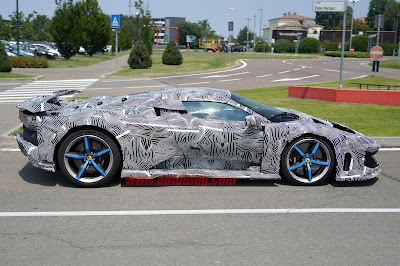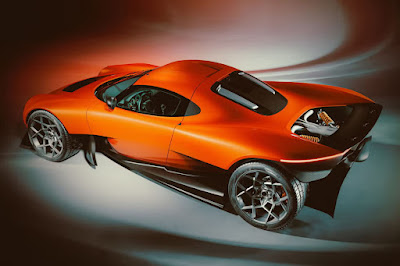⚠️Grandpa Masterpiece💣 - Creativity in the automotive world knows no age limits. Even an elderly grandfather can succeed in making his dream car. Kristi D. Johnson's grandpa, Wes, went viral on TikTok with his inspiring journey. He didn't attend college until his 30s, graduating from medical school at 41. Despite the challenges, in his retirement, he built the Creager Hybrid—a crowning achievement of ingenuity, passion, and determination.
 |
| A unique red Cadillac Eldorado convertible custom, known as the Creager Hybrid, was showcased at the Nashville Good Guys 2012. (Picture from: LegendaryCollectorCars) |
Wes proudly introduced the Creager Hybrid, a custom-built red Cadillac Eldorado made from at least ten different cars, all sourced from junkyards. The idea for this unique creation began 30 years ago when a race car driver friend offered him a Cadillac Eldorado with the biggest engine Cadillac made. Although it was front-wheel drive, Wes envisioned a rear-driven sports car, so he started planning his build, storing the car at an airport. Starting the build in 1996 and finishing around 2000, the Creager Hybrid highlights Wes Johnson's dedication and skill.
He found a frame in a junkyard that matched the Cadillac's width, welded it together, and slowly pieced together his masterpiece. The Creager Hybrid truly lives up to its name. The grill is from a modified GMC pickup, the front suspension from a Mustang, and the headlights from a Mazda. The front features an old Cadillac hood with custom-shaped fenders. The windshield is from a Ford pickup, and the doors are from a Chevy Camaro. The hubcaps come from a Lincoln Continental, and the rear is a modified Cadillac with shortened fenders and a custom trunk lid.
 |
| A unique red Cadillac Eldorado convertible custom, known as the Creager Hybrid, was showcased at the Nashville Good Guys 2012. (Picture from: Kristi D. Johnson's Pages in TikTok ) |
Inside the Creager Hybrid, Wes’s craftsmanship shines. He meticulously shaped and laminated wood for the interior, covered with vinyl for a polished look. The original Cadillac hood mechanism was preserved for functionality, and the metal fenders were skillfully welded to create perfect curves.
The front end of the Creager Hybrid, the only part not made of metal, is entirely fiberglass. Wes constructed forms from wood, covered them with styrofoam, and shaped them to fit, adding a heavy rope for extra strength. The headlights, which lift with a spring-loaded window raiser from a Ford, automatically turn on when raised.
Wes designed the gas tank to serve a dual purpose: holding gas and channeling air to the rear engine for cooling. Furthermore, he customized each part of the Creager Hybrid, meticulously cutting, bending, and welding the fenders to achieve the perfect shape. He then encountered another challenge when the carburetor protruded through the trunk lid. To address this, he created a wooden mold, covered it with fiberglass, and fashioned a Continental kit to conceal it.
 |
| A unique red Cadillac Eldorado convertible custom, known as the Creager Hybrid. (Picture from: Kristi D. Johnson's Pages in TikTok ) |
Uniquely, the car is insured and registered as a 1970 Cadillac Eldorado, ensuring it’s road-legal. The Creager Hybrid is more than just a custom car—it’s a story of resilience, creativity, and passion. Wes Johnson’s meticulous craftsmanship and innovative problem-solving have resulted in a unique masterpiece. |
 As a final note, while this article aims to capture the essence of the Creager Hybrid, it may contain imperfections or inaccuracies. We welcome any suggestions for improvement in the comments below. *** [EKA | FROM VARIOUS SOURCES | KRISTI D. JOHNSON'S PAGES IN TIKTOK | LEGENDARYCOLLECTORCARS | SCOOPWHOOP | STACEYDAVID'S PAGES IN INSTAGRAM ]
As a final note, while this article aims to capture the essence of the Creager Hybrid, it may contain imperfections or inaccuracies. We welcome any suggestions for improvement in the comments below. *** [EKA | FROM VARIOUS SOURCES | KRISTI D. JOHNSON'S PAGES IN TIKTOK | LEGENDARYCOLLECTORCARS | SCOOPWHOOP | STACEYDAVID'S PAGES IN INSTAGRAM ]Note: This blog can be accessed via your smart phone




































